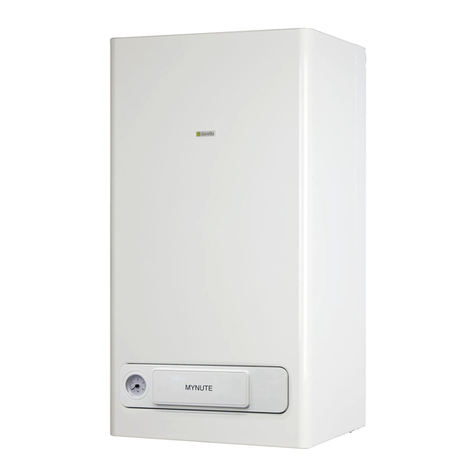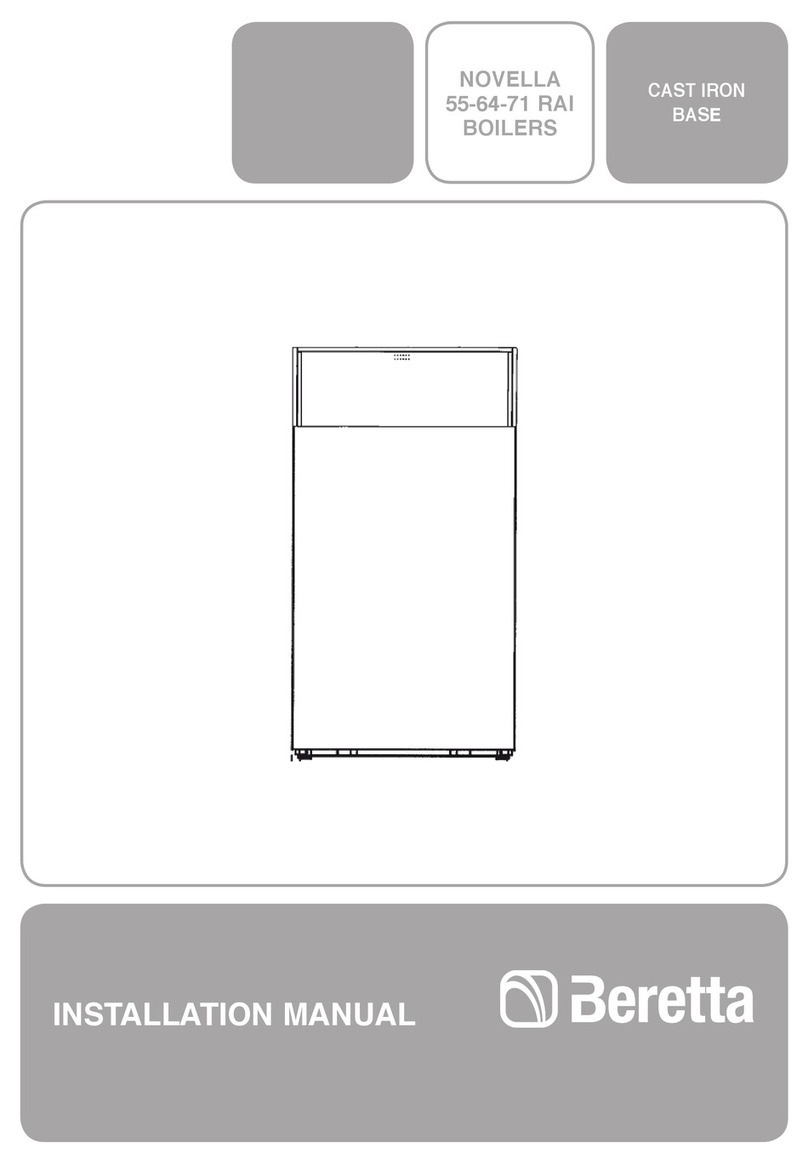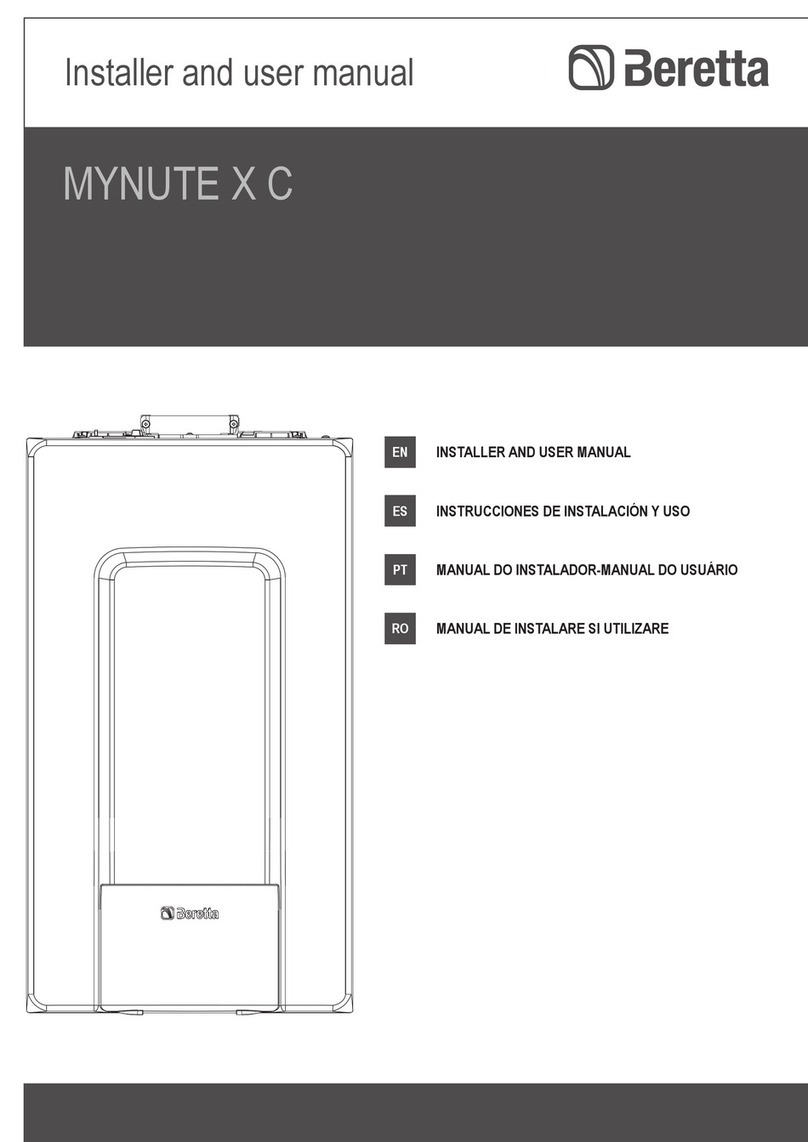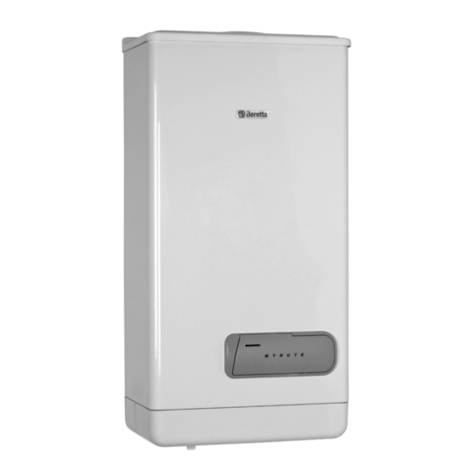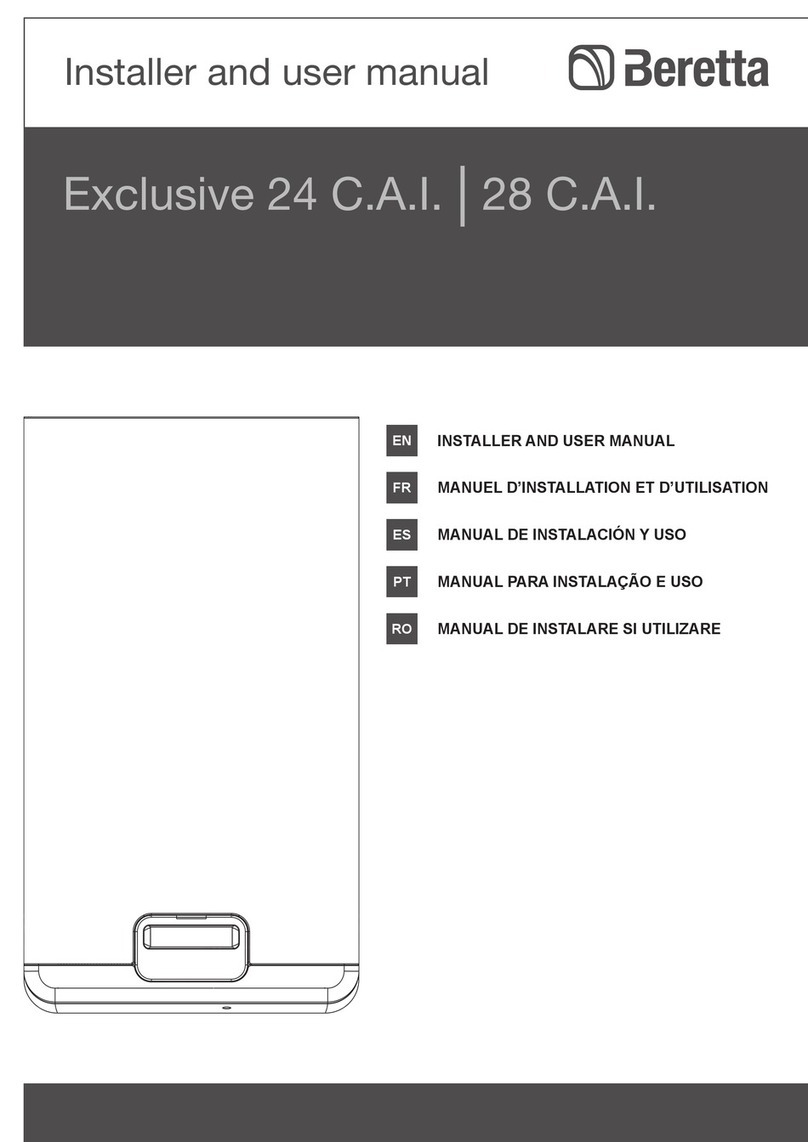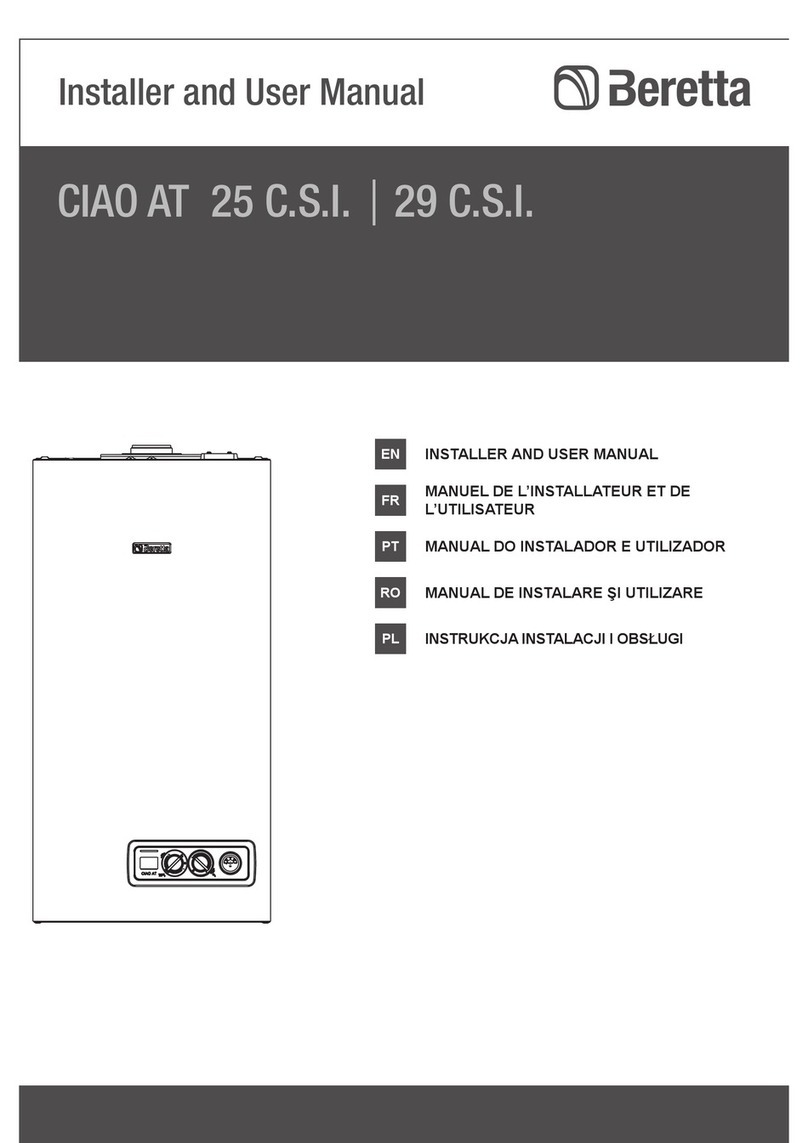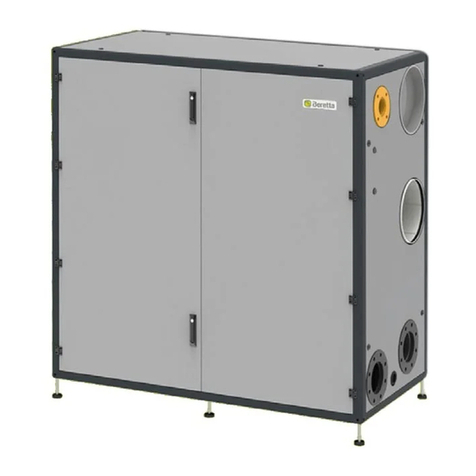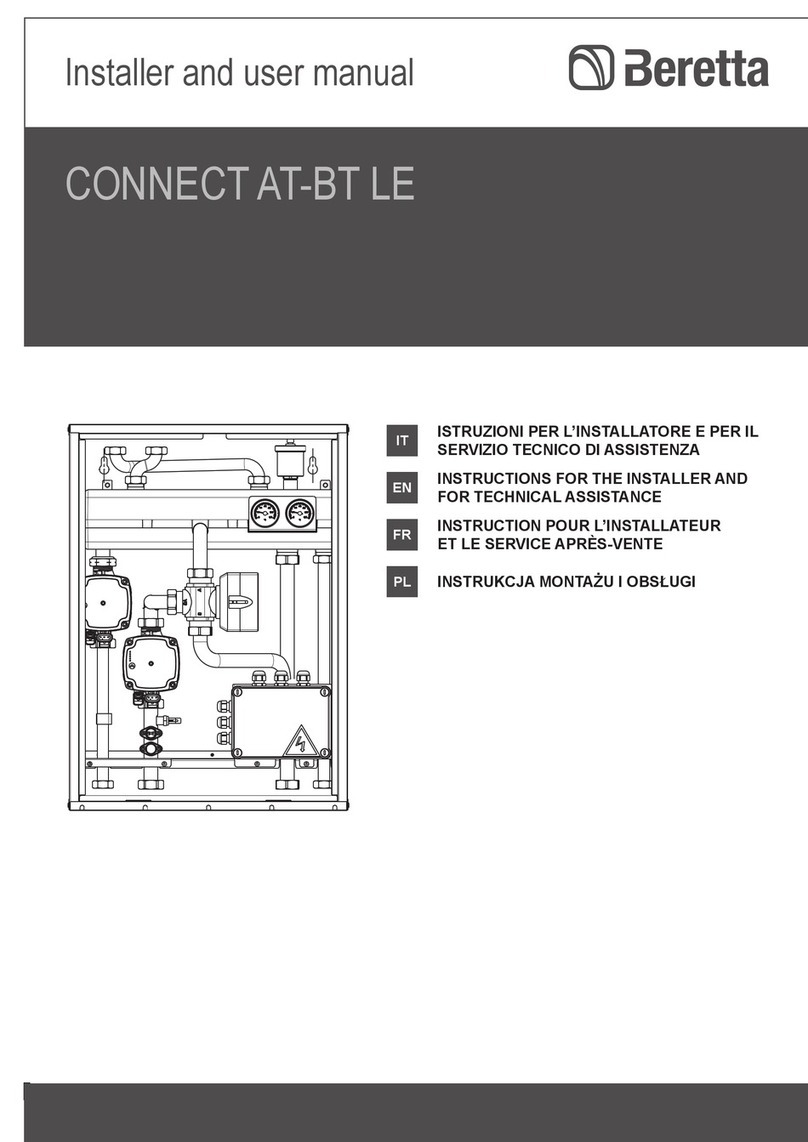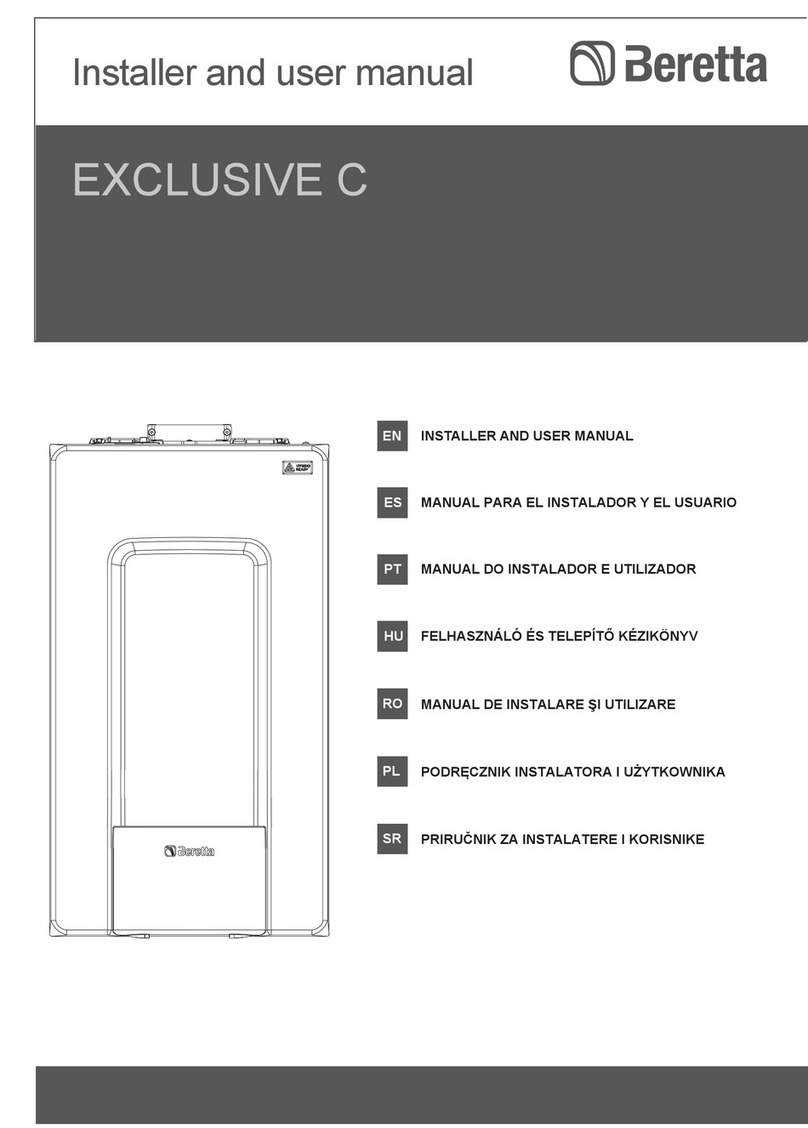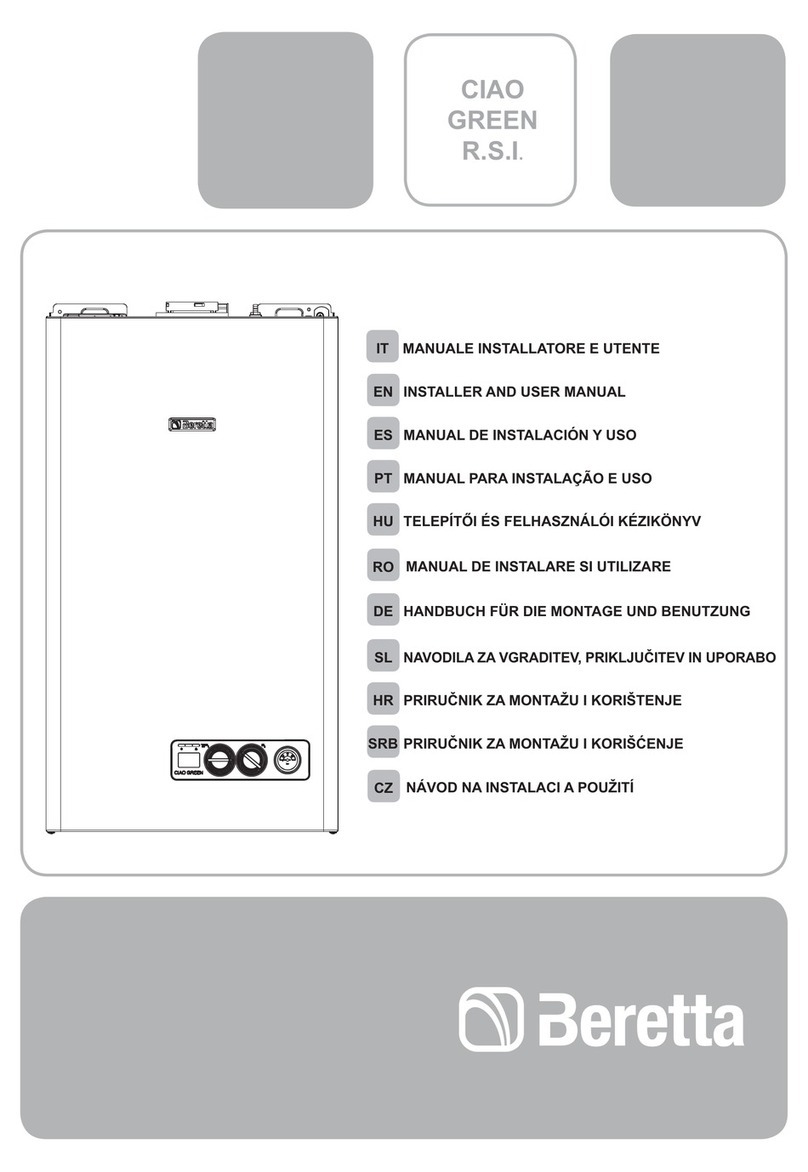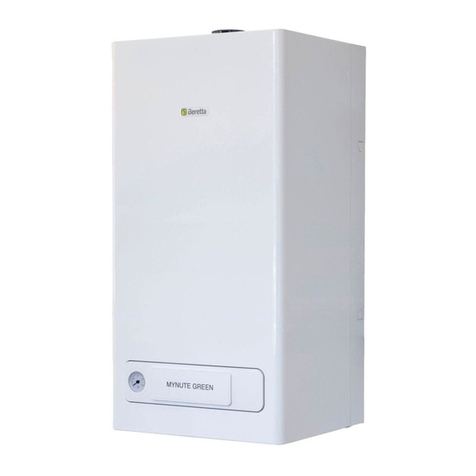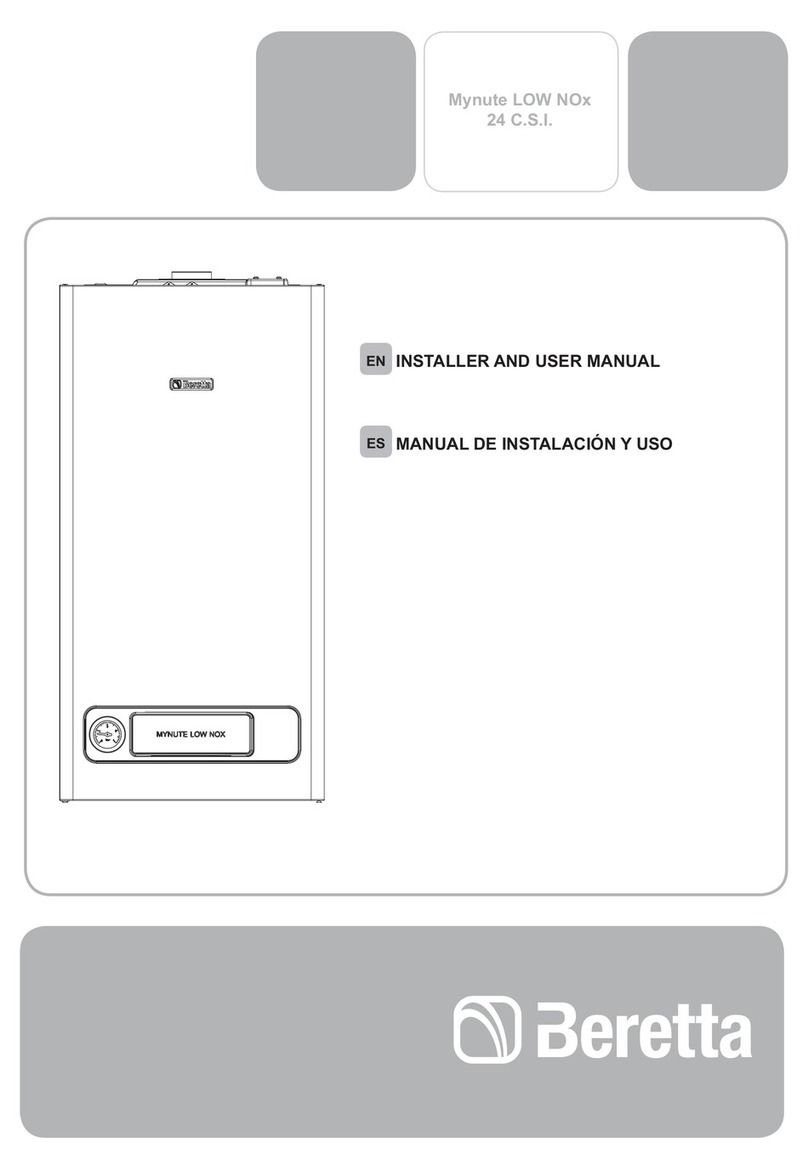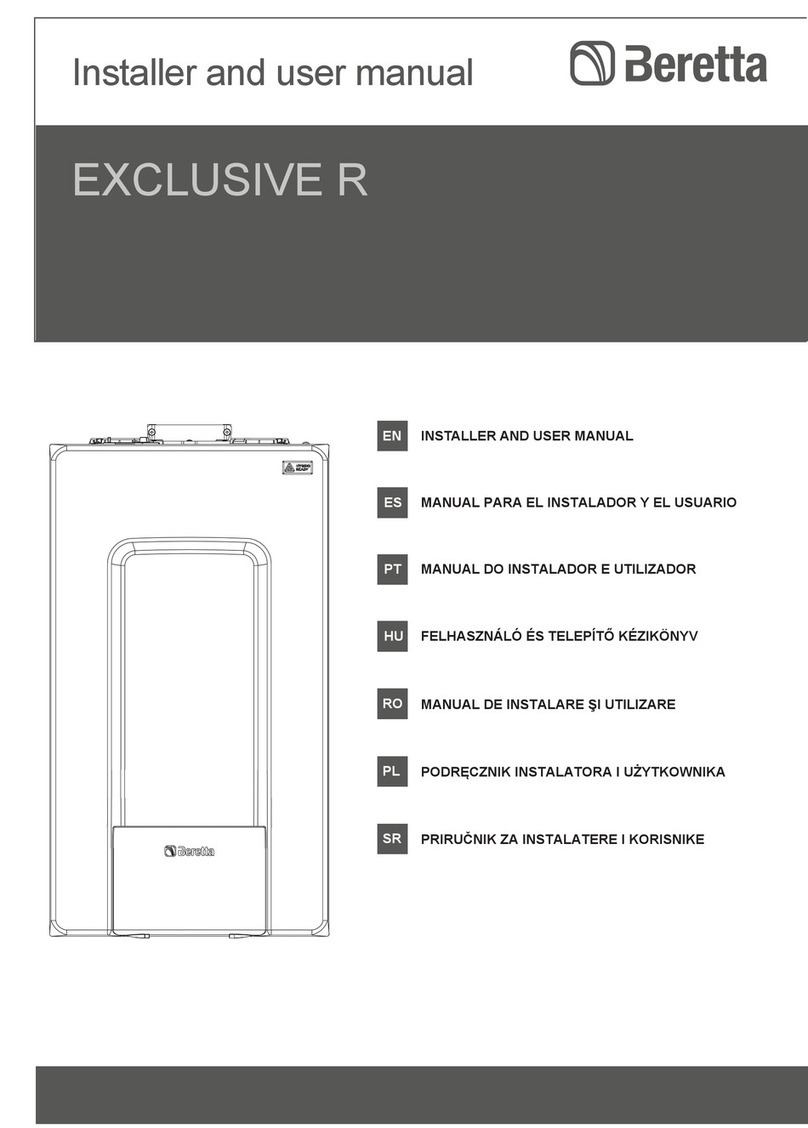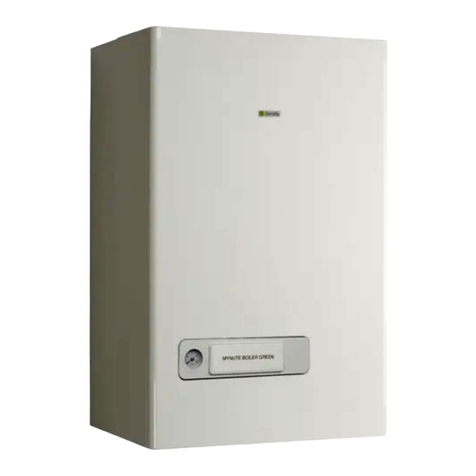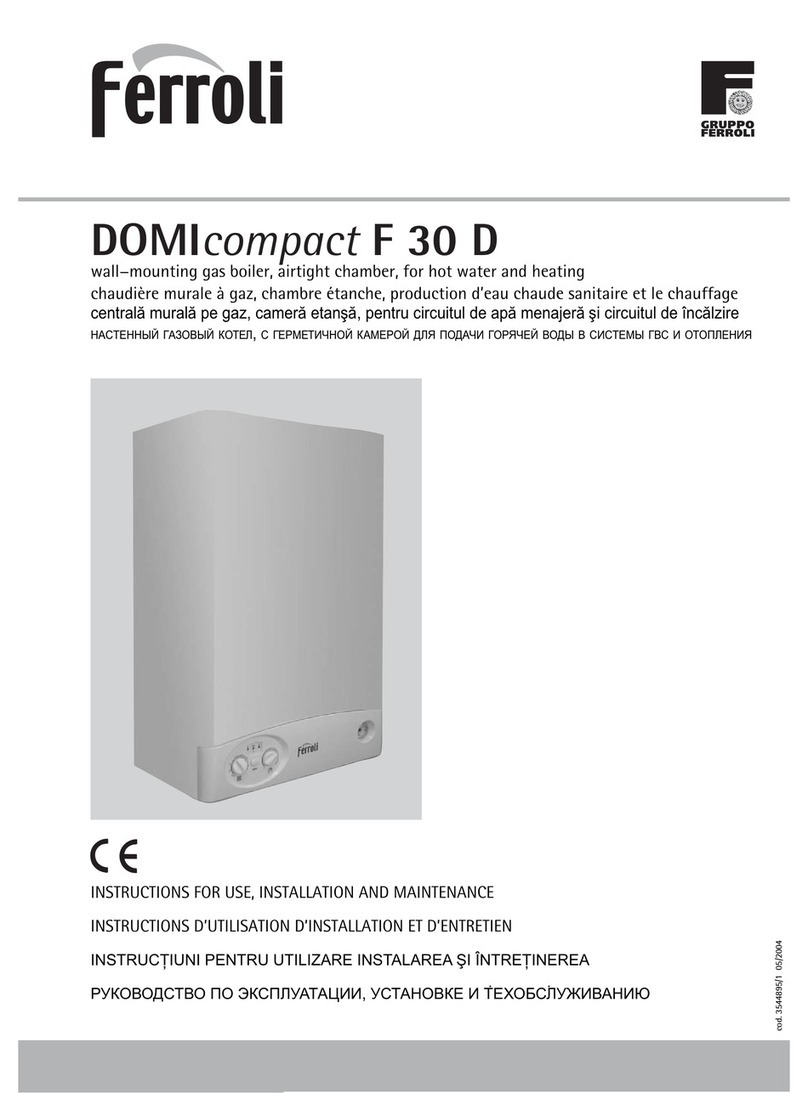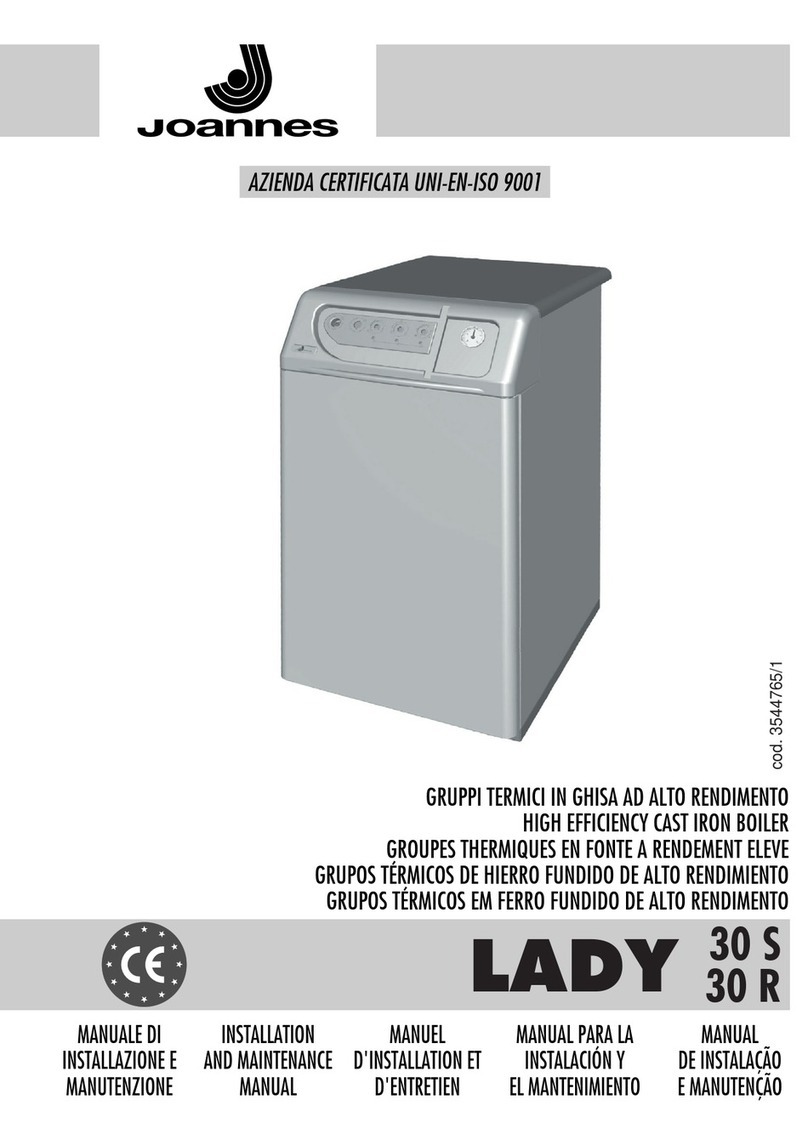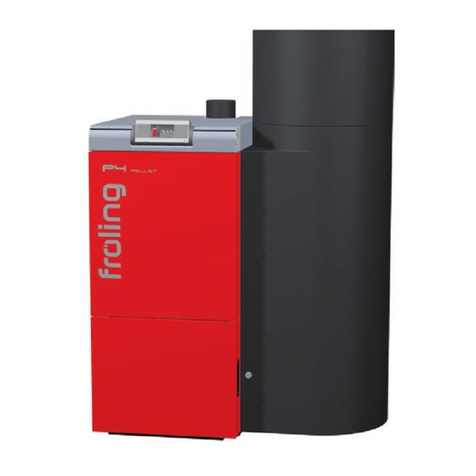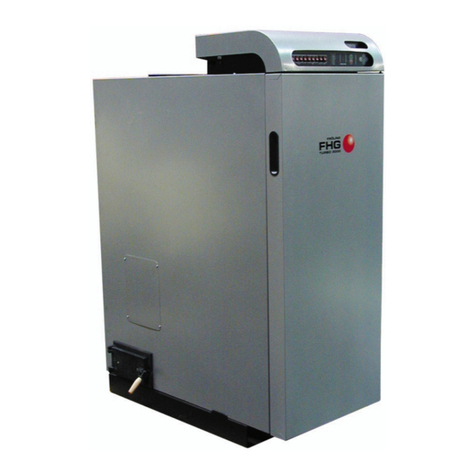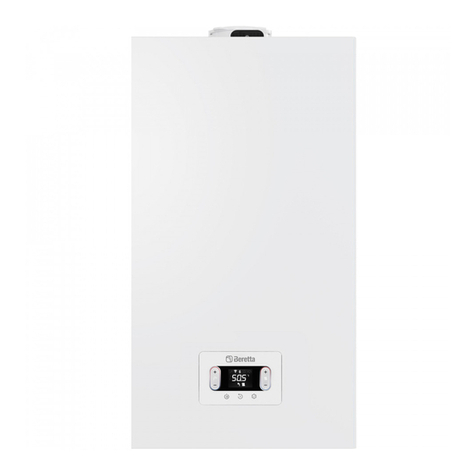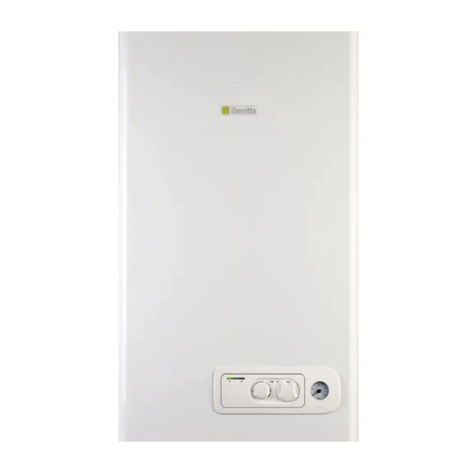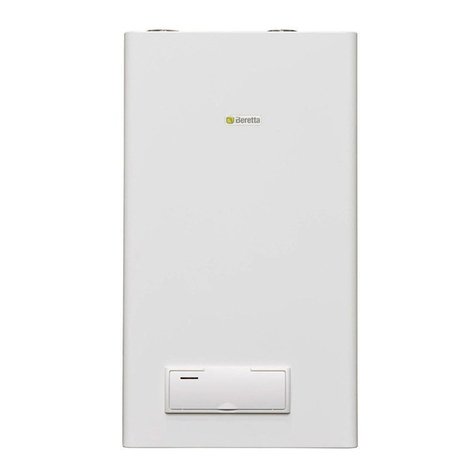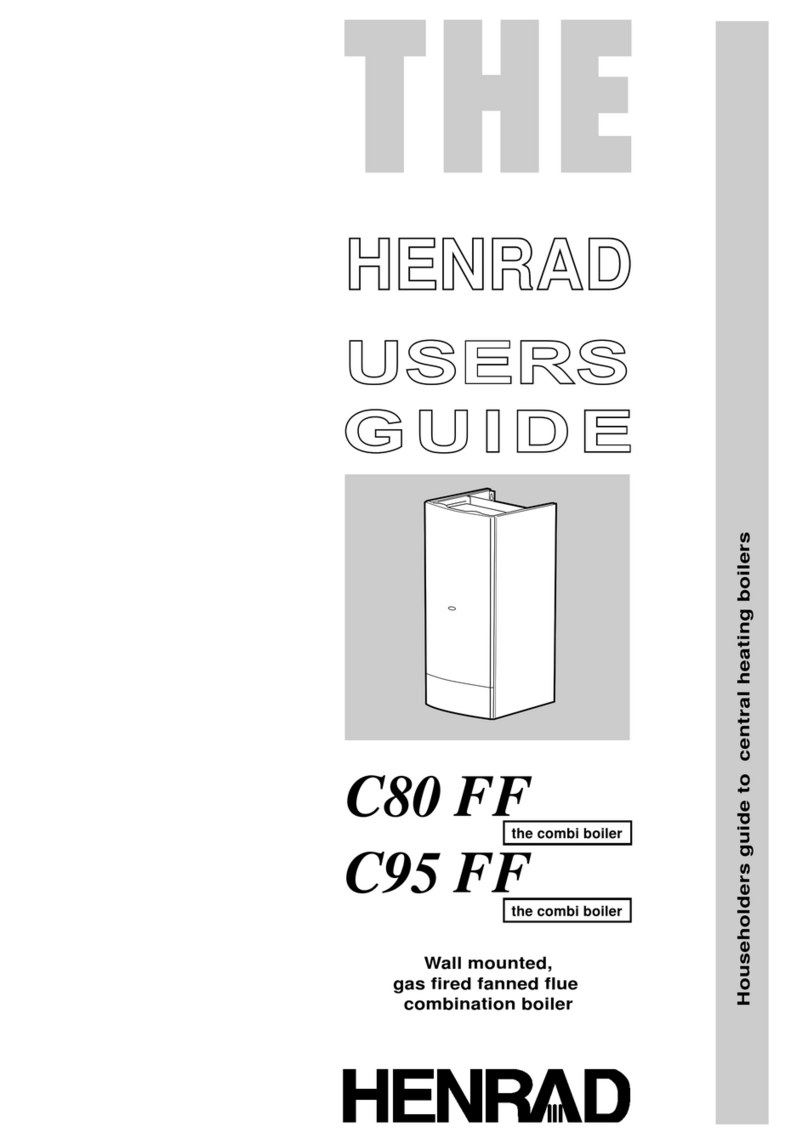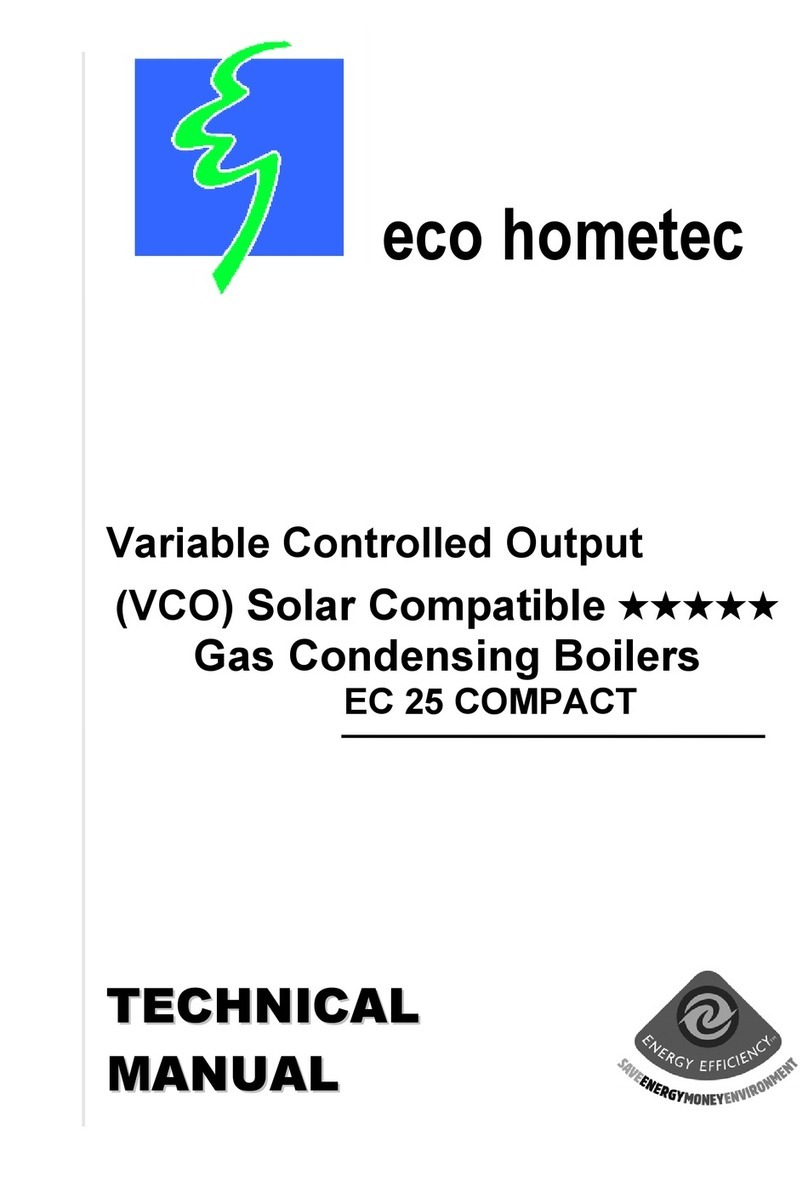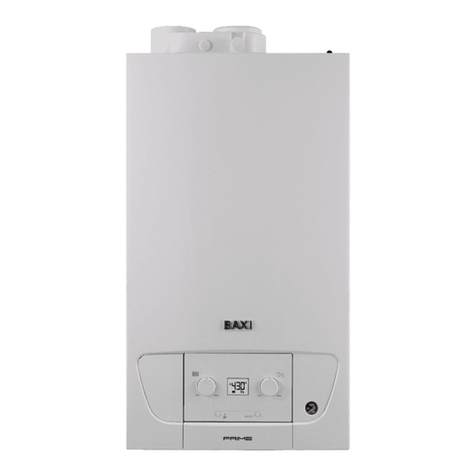6
EXCLUSIVE BOILER GREEN HE B.S.I.
4- CLEANING THE SYSTEMAND CHARACTERISTICS
OF HEATING CIRCUI
T WATER
After installing a new system or replacing a boiler, clean the heat-
ing system.
To ensure the product works correctly, after cleaning, additivating
and/or chemically treating the system (e.g.: anti-freeze, film-form-
ers, etc.), make sure the characteristics of the water satisfy the
parameters indicated in the table.
Parameters um Water in heating
circuit
Inlet water
PH 7 ÷ 8 -
Hardness ° F - 15 ÷20
Appearance - limpid
5- INSTALLING THE EXTERNAL PROBE
Install the probe (fig. 4) in an area of smooth wall; for brick walls
or other irregular surfaces, prepare a smooth contact area if at all
possible.
Remove the upper plastic cover by turning it anti-clockwise.
Identify the wall fixing point and drill a hole for the 5x25 expansion
grip. Insert the expansion grip into the hole. Remove the card from
its housing. Fix the housing to the wall using the supplied screw.
Attach the bracket and tighten the screw. Loosen the cable grom-
met screw, push in the probe connection cable and connect it to the
electrical terminal. Remember to firmly secure the cable grommet
to prevent humidity from entering. Put the card back into its hous-
ing. Close the upper plastic cover by turning it clockwise. Firmly
secure the cable grommet.
Installing and connecting up the external sensor
The sensor must be installed on an external wall of the building
you want to heat, while taking care to comply with the instructions
below:
- It must be fitted on the facade most often exposed to wind, on a
wall facing NORTH or NORTH-WEST, and taking care to avoid
direct sunlight.
- It must be fitted about 2/3 up the height of the façade.
- It must not be near any doors, windows, outlets for air ducts, or
near chimneys or other heat sources.
The electrical connection to the external sensor must be formed
using a two-pole cable (not supplied), with a cross-section of 0,5
to 1 mm2 and a maximum length of 30 metres. It is not necessary
to worry about the polarity of the cable for the connection to the
external sensor. Do not form joints in this cable. If a joint has to be
made it must be watertight and adequately protected.
Any conduiting used for the connection cable must be sepa-
rate from the conduits used for the power cables (230 Vac).
6- CONDENSATE COLLECTION
The outlet collector (A, fig. 5) collects: the condensate water, any
evacuation water from the safety valve and the system outlet water.
The collector must be connected, by means of a rubber pipe,
to a suitable collection and evacuation system in the storm
water outlet and in compliance with current regulations.
The external diameter of the collector is 20 mm: we therefore
suggest using an Ø18-19 mm pipe, to be closed with a suit-
able clamp (not supplied).
The manufacturer is not responsible for any damage caused
by the lack of a collection system.
The outlet connection line must have a guaranteed seal.
The manufacturer of the boiler is not responsible for any
flooding caused by interventions of the safety valve.
7- GAS CONNECTION
Before connecting appliance to gas pipe network, check the fol-
lowing:
- regulations in force are met
- gas type used is the same as set for appliance operation
- pipes are clean.
After installation make sure that all the joints have been made
airtight conforming to standard installation practices.
Gas must be piped externally. If the pipe goes through a wall it must
go through the central opening in the lower part of the template. It
is recommended to install an appropriately sized filter on the gas
line in case gas from the mains contains some small solid particles.
8- ELECTRIC CONNECTION
To access the electrical connections, proceed as follows:
- loosen the fixing screws (A) and remove the shell (fig. 3)
- lift up the panel and turn it forwards
- open the terminal board covers making them slide in the direc-
tion of the arrows (fig. 6: Bhigh voltage connections 230 V, Clow
voltage connections).
Connect the appliance to the mains electricity supply with a switch
featuring a distance of at least 3,5 mm (EN 60335-1, category III)
between each wire. The appliance uses alternating current at 230
Volt/50 Hz, has a power input of 66W (25 B.S.I.) - 116W (35 B.S.I.)
and complies with EN 60335-1. The appliance must be connected
to an efficient earth circuit, according to current legislation and by-
laws.
Live and neutral (L-N) connections should also be respected.
The boiler can operate with phase-neutral or phase-phase power
supply. For floating power supply, without an earth-bonded conduc-
tor, it is necessary to use an insulation transformer with secondary
anchored to ground.
The earth conductor must be a couple of cm longer than the
others.
Gas and/or water pipes may not be used to earth electrical
equipment.
The installer is responsible for making sure that the appliance
has an adequate earthing system; the manufacturer shall not
be held liable for eventual damages caused by incorrect us-
age or failing to earth the boiler.
Use the supplied power cable to connect the boiler to the mains
power supply.
Connect the ambient thermostat and/or time clock as shown in the
electrical diagram.
When replacing the power cable, use a HAR H05V2V2-F cable,
3 x 0,75 mm2, Ø max. external 7 mm.
9- FILLING THE SYSTEMS, ELIMINATING THE
AIR AND EMPTYING THE SYSTEMS
The systems can be filled up once the water mains have been con-
nected up.
This must be done while the installation is cold by:
DHW system (fig. 7)
- open the cold water stopcock (H) to fill up the water tank
- open the hot water to check the water tank filled up and wait until
the water discharge
Heating system (fig. 7)
- making sure that the drain valve (B) is closed
- giving two or three turns to the cap of the automatic air vent valve
(C) to open it
- opening the filling stopcock (I) until the pressure measured by
the hydrometer (D) is about 1,5 bar (blue zone)
- open the manual vent valve (E) and close it again once the sys-
tem has been vented; if necessary, repeat this operation until no
more air leaves the valve (E)
- close the filling stopcock (I)
- each time the electricity supply to the boiler is switched on, an
automatic vent cycle lasting about 2 minutes starts, and the dis-
play reads “SF”, and the “functions selectors” light up in se-
quence. Press the button to interrupt the automatic vent-
ing cycle.
NOTE: air extraction from the boiler takes place automatically,
through two automatic bleeding valves, Cand F.
NOTE: the boiler is also equipped with a semi-automatic filling sys-
tem. The first system-filling operation must be carried out by open-
ing tap Iwith the boiler turned off.
CH system emptying (fig. 7)
Before starting to empty it, remove the electrical feeder by position-
ing the general switch for the system on “off”.

